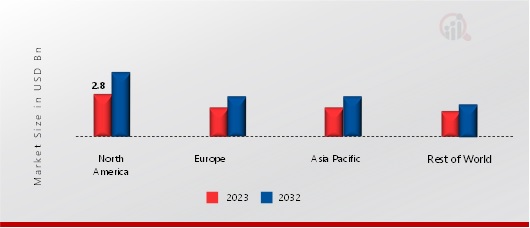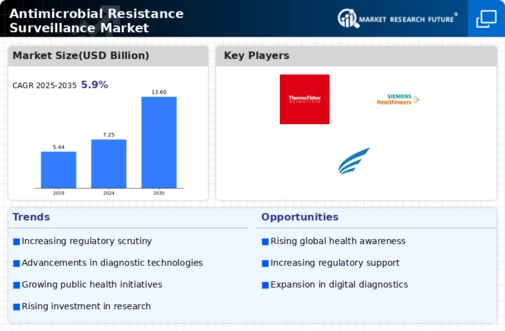By region, the study provides the market insights into North America, Europe, Asia-Pacific, and the Rest of the World. North America dominates the Antimicrobial Resistance Surveillance Market primarily due to robust healthcare infrastructure, extensive research and development initiatives, and stringent regulatory frameworks promoting antimicrobial stewardship. Moreover, increasing incidences of antimicrobial-resistant infections, coupled with proactive government initiatives and high healthcare expenditure, further drive market growth. Additionally, the presence of key market players and collaborations between research institutes and pharmaceutical companies foster innovation and technological advancements, consolidating North America's position as the leading region in the antimicrobial resistance surveillance market.
Further, the major countries studied in the market report are the US, Canada, Germany, France, the UK, Italy, Spain, China, Japan, India, Australia, and South Korea.
Figure 2: Antimicrobial Resistance Surveillance Market Share By Region 2023 (USD Billion)

Source: Secondary Research, Primary Research, Market Research Future Database and Analyst Review
Europe Antimicrobial Resistance Surveillance market accounts for the second-largest market share due to the low extensive research infrastructure. Europe holds the second-largest market share in the Antimicrobial Resistance Surveillance Market due to several factors. The region boasts a sophisticated healthcare system, extensive research infrastructure, and significant government initiatives addressing antimicrobial resistance. Additionally, stringent regulations regarding antibiotics use and robust surveillance programs contribute to market growth. Furthermore, increasing awareness among healthcare professionals and the general population regarding the importance of antimicrobial stewardship drives the adoption of surveillance technologies.
These factors collectively position Europe as a key player in the antimicrobial resistance surveillance market. Further, the German Antimicrobial Resistance Surveillance market held the largest market share, and the UK Antimicrobial Resistance Surveillance market was the fastest growing market in the European region.
The Asia-Pacific Antimicrobial Resistance Surveillance Market is expected to grow at the fastest CAGR from 2025 to 2034. The Asia Pacific region is experiencing the highest Compound Annual Growth Rate (CAGR) in the Antimicrobial Resistance Surveillance Market due to several factors. Rapid population growth, urbanization, and increasing healthcare expenditure drive the demand for surveillance solutions. Moreover, rising incidences of antimicrobial-resistant infections, coupled with improving healthcare infrastructure and government initiatives to combat antimicrobial resistance, further fuel market growth. Additionally, growing awareness among healthcare providers and investment in research and development contribute to the region's accelerated growth in antimicrobial resistance surveillance.
Moreover, China’s Antimicrobial Resistance Surveillance market held the largest market share, and the Indian Antimicrobial Resistance Surveillance market was the fastest growing market in the Asia-Pacific region.





